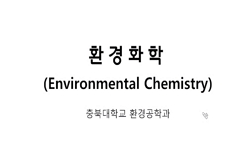<P><B>Abstract</B></P> <P>The bioelectrochemical anaerobic nitrogen removal was demonstrated in an anaerobic batch reactor equipped with a pair of polarized bioelectrodes. The bioelectrochemical reactor was operated in s...
http://chineseinput.net/에서 pinyin(병음)방식으로 중국어를 변환할 수 있습니다.
변환된 중국어를 복사하여 사용하시면 됩니다.
- 中文 을 입력하시려면 zhongwen을 입력하시고 space를누르시면됩니다.
- 北京 을 입력하시려면 beijing을 입력하시고 space를 누르시면 됩니다.



Electroactive microorganisms enriched from activated sludge remove nitrogen in bioelectrochemical reactor
한글로보기https://www.riss.kr/link?id=A107447365
- 저자
- 발행기관
- 학술지명
- 권호사항
-
발행연도
2019
-
작성언어
-
- 주제어
-
등재정보
SCI,SCIE,SCOPUS
-
자료형태
학술저널
-
수록면
249-257(9쪽)
- 제공처
- 소장기관
-
0
상세조회 -
0
다운로드
부가정보
다국어 초록 (Multilingual Abstract)
<P><B>Abstract</B></P> <P>The bioelectrochemical anaerobic nitrogen removal was demonstrated in an anaerobic batch reactor equipped with a pair of polarized bioelectrodes. The bioelectrochemical reactor was operated in sequential batch mode after inoculating activated sludge and polarizing the electrode to 0.6 V. The medium contains ammonium, nitrite, alkalinity and trace minerals, but no organic carbon source. By the repetitive sequential operation, simultaneous removals of ammonium, nitrite and alkalinity were improved, and the electrochemical activity of the bulk sludge was confirmed from the redox peaks of the cyclic voltammogram. This indicates that ammonia oxidizing exoelectrogens (AOE) and denitritating electrotrophs (DNE) were enriched more in the bulk solution. Biogas production that mainly consisted of nitrogen was observed from the bioelectrochemical reactor, and the minor components in the biogas were methane and carbon dioxide. This demonstrates that AOE use nitrite as an electron acceptor to oxidize ammonia. The requirements of nitrite and alkalinity for the removal of ammonia nitrogen are around 0.72 mg NO<SUB>2</SUB>-N/mg NH<SUB>4</SUB>-N and 1.73 mg as CaCO<SUB>3</SUB>/mg NH<SUB>4</SUB>-N, respectively, and nitrate was not produced as a by-product. The bacterial groups involved in the bioelectrochemical nitrogen removal are electroactive autotrophs and can be enriched from activated sludge by polarized electrode. This bioelectrochemical ammonia oxidation is a novel approach recommended for treatment of nitrogen-rich wastewater.</P> <P><B>Highlights</B></P> <P> <UL> <LI> Electroactive autotrophs are enriched from activated sludge by polarized electrode. </LI> <LI> The autotrophs remove NH<SUB>4</SUB>-N and NO<SUB>2</SUB>-N bioelectrochemically in anaerobic condition. </LI> <LI> Nitrite required for the ammonium removal is 0.72 mg NO<SUB>2</SUB>-N/mg NH<SUB>4</SUB>-N. </LI> <LI> Alkalinity required for the ammonium removal is 1.73 mg as CaCO<SUB>3</SUB>/mg NH<SUB>4</SUB>-N. </LI> <LI> Bioelectrochemical N removal process does not produce nitrate as a by-product. </LI> </UL> </P>




 ScienceON
ScienceON



